
Find Help
More Items From Ergsy search
-

How is measles transmitted?
Relevance: 100%
-

How is measles transmitted?
Relevance: 90%
-
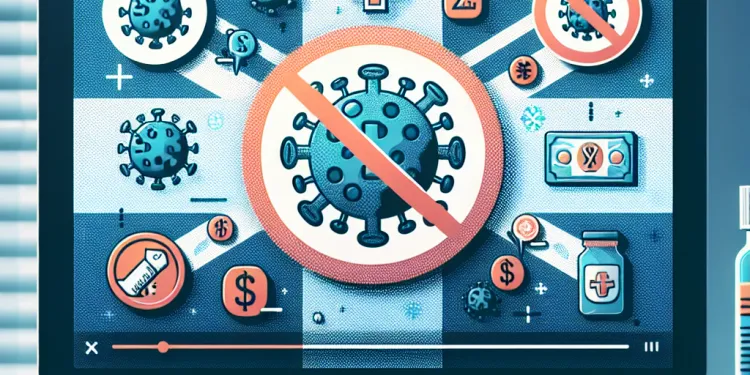
How can measles be prevented?
Relevance: 85%
-
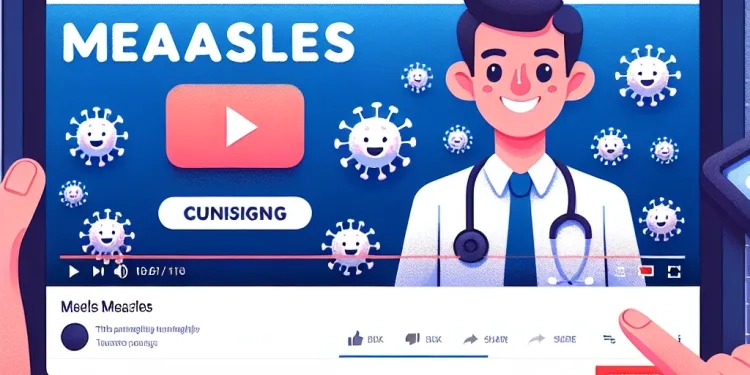
Measles
Relevance: 84%
-

Is Rubella the same as measles?
Relevance: 84%
-

Is there a treatment for measles?
Relevance: 79%
-

Is there a treatment for measles?
Relevance: 79%
-
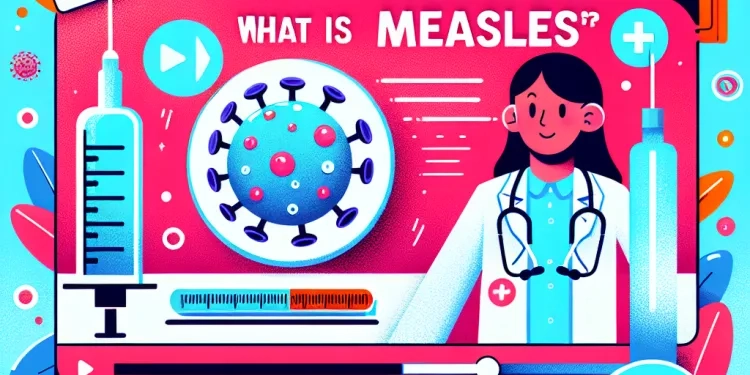
What is measles?
Relevance: 79%
-

What should I do if I suspect I have measles?
Relevance: 76%
-

Can measles be serious?
Relevance: 76%
-

Are measles outbreaks common in the UK?
Relevance: 75%
-

What are the symptoms of measles?
Relevance: 75%
-

What are the symptoms of measles?
Relevance: 75%
-
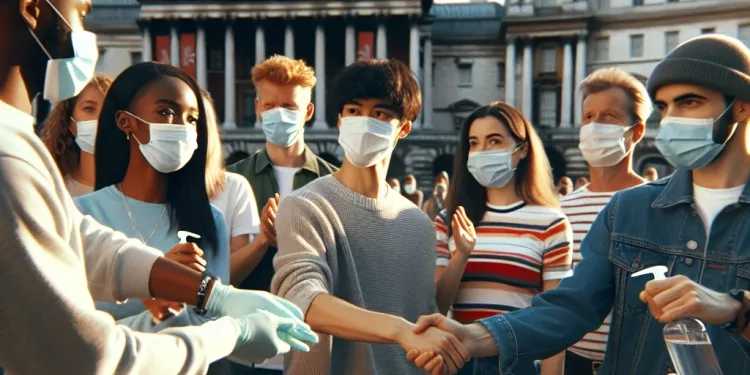
What should you do during a measles outbreak?
Relevance: 73%
-
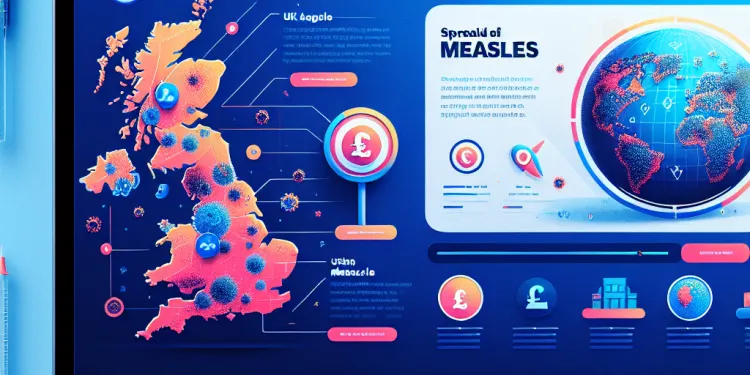
Are measles more common outside of the UK?
Relevance: 73%
-

Can measles cause complications?
Relevance: 73%
-
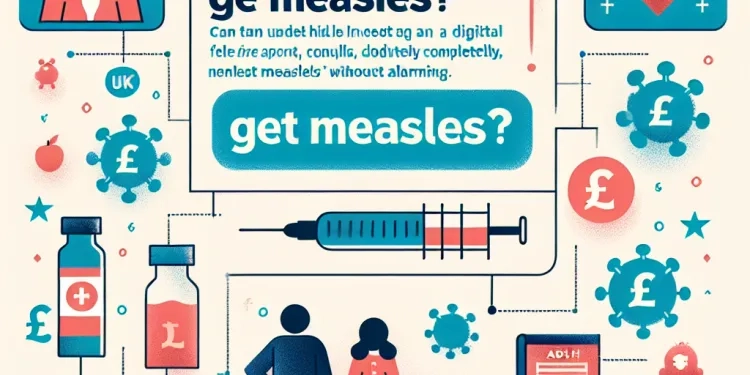
Can adults get measles?
Relevance: 72%
-

Why is measles less common in the UK?
Relevance: 72%
-

How does vaccination affect measles rates?
Relevance: 71%
-
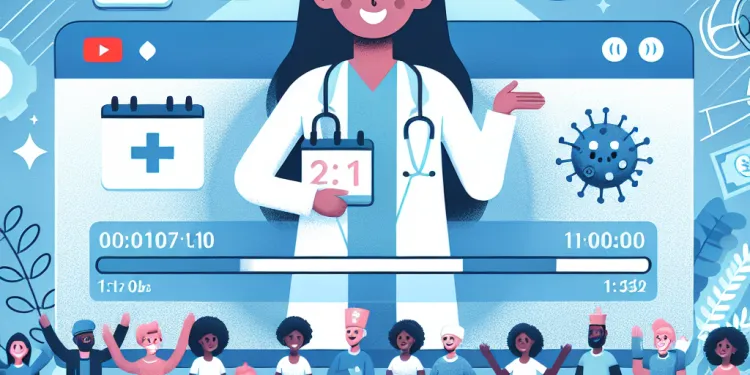
How long is a person with measles contagious?
Relevance: 70%
-

Why are measles outbreaks still occurring?
Relevance: 70%
-

Are new variants more transmissible?
Relevance: 69%
-
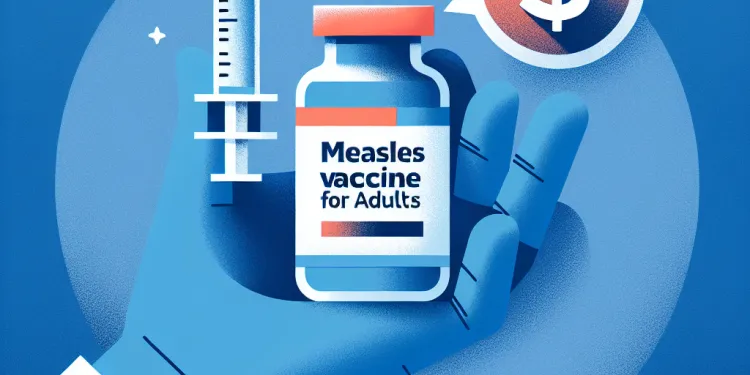
Can the measles vaccine be given to adults?
Relevance: 69%
-

What is the current measles vaccination coverage in the UK?
Relevance: 68%
-

Which countries have higher rates of measles?
Relevance: 68%
-

Is it necessary to get a measles vaccine before travelling?
Relevance: 67%
-
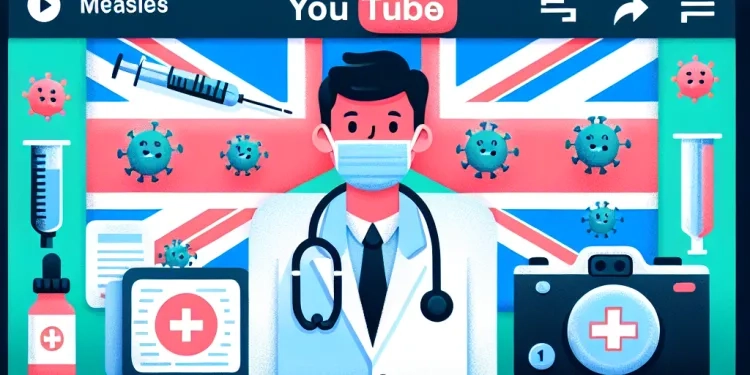
Can you get measles more than once?
Relevance: 66%
-

What should you do if you suspect you have measles?
Relevance: 63%
-

What role do fruit bats play in Nipah Virus transmission?
Relevance: 56%
-

How is blood screened to prevent disease transmission?
Relevance: 55%
-

What measures are taken to prevent disease transmission in blood transfusions?
Relevance: 52%
-

Why is blood donation history important in preventing disease transmission?
Relevance: 46%
-

How is Rubella transmitted?
Relevance: 44%
-

What is Rubella?
Relevance: 38%
-
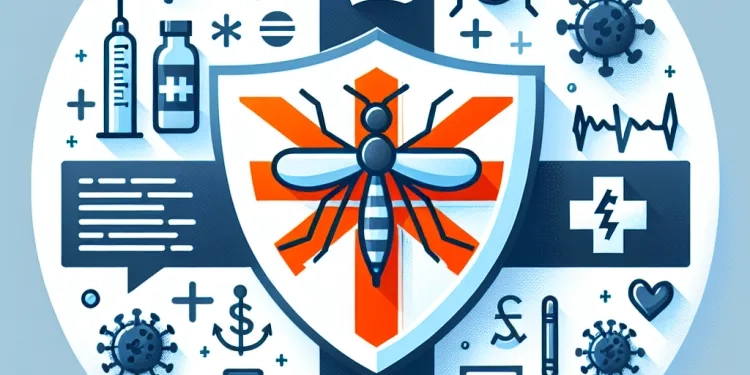
What measures are in place to prevent Zika virus transmission in the UK?
Relevance: 34%
-

How serious is Rubella?
Relevance: 33%
-

How effective is the MMR vaccine?
Relevance: 33%
-

Who should receive the MMR vaccine?
Relevance: 32%
-

What is a live-attenuated vaccine?
Relevance: 26%
-

How is Nipah Virus transmitted?
Relevance: 26%
Understanding How Measles is Transmitted
Measles is a highly contagious viral infection that has posed a significant health risk in the United Kingdom and across the globe. The transmission of measles is a critical aspect of its infectious nature, understanding which can help in both prevention and control efforts.
The Virus and its Mode of Transmission
Measles is caused by the measles virus, a single-stranded RNA virus from the paramyxovirus family. This virus is primarily transmitted through respiratory droplets when an infected person coughs or sneezes. These droplets can be inhaled by people nearby, leading to a new infection. The measles virus can also linger in the air for up to two hours, which makes it possible for individuals entering the same room to become infected even after the infected person has left.
Contagiousness and its Impact
The measles virus is one of the most contagious viruses known. In a susceptible population, one person with measles can infect 12 to 18 others. Due to its high transmission potential, it is crucial for communities to maintain high vaccination rates to achieve herd immunity. In the UK, this underscores the importance of the MMR (measles, mumps, and rubella) vaccine, which has successfully reduced the incidence of measles when coverage is maintained at recommended levels.
Prevention Strategies
Preventing the transmission of measles relies heavily on vaccination. In the United Kingdom, the NHS offers the MMR vaccine as part of the routine childhood vaccination schedule. It's important for parents to ensure their children receive the full course of the vaccine, which includes two doses for optimal protection. High vaccination rates are essential to prevent outbreaks and protect vulnerable populations, such as infants too young to be vaccinated and individuals with weakened immune systems.
Conclusion
Understanding how measles is transmitted is fundamental in combating its spread. The combination of direct droplet spread and the virus’s ability to survive in the air necessitates rigorous vaccination efforts and awareness campaigns to ensure public safety. Individuals in the UK and globally are encouraged to get vaccinated and participate in public health initiatives to keep measles at bay and protect communities from outbreaks.
Understanding How Measles Spreads
Measles is an illness caused by a virus. It spreads very easily and can make people very sick. This is a problem in the United Kingdom and around the world. Knowing how measles spreads helps us stop it and keep people safe.
How the Virus Spreads
The measles virus spreads when someone who is sick coughs or sneezes. Tiny droplets come out of their mouth and nose and float in the air. If another person breathes in these droplets, they can get sick too. The measles virus can also stay in the air for up to two hours. This means someone can get sick just by walking into the same room, even after the sick person has left.
Why Measles Spreads Easily
The measles virus spreads to lots of people very quickly. One person with measles can make 12 to 18 other people sick. Because it spreads so fast, it's important for people to get the MMR vaccine (measles, mumps, and rubella) to stay safe. In the UK, getting the vaccine helps stop measles and keeps everyone safe.
How to Prevent Measles
The best way to stop measles is by getting vaccinated. In the UK, children get the MMR vaccine as part of their regular doctor visits. It’s important for parents to make sure their children get all doses of the vaccine. When lots of people get vaccinated, it stops outbreaks and protects those who can’t get the vaccine, like young babies or people who are already sick.
Conclusion
By knowing how measles spreads, we can stop it. The virus spreads through droplets in the air, so getting vaccinated and telling others about it is key to keeping everyone safe. People in the UK and around the world should get vaccinated to help protect themselves and others from getting sick with measles.
Frequently Asked Questions
How is measles transmitted?
Measles is primarily transmitted through respiratory droplets when an infected person coughs or sneezes. It can also spread by direct contact with nasal or throat secretions.
Can measles be spread through surfaces?
Yes, measles can survive on surfaces for up to two hours and can remain infectious on items like door handles and shared utensils, making indirect transmission possible.
How contagious is measles?
Measles is highly contagious. About 90% of non-immune individuals close to an infected person will catch measles.
What is the infectious period for measles?
An infected person can spread measles from about four days before the rash appears until four days after.
Can I catch measles if I've been vaccinated?
The measles vaccine is highly effective, but no vaccine offers 100% protection. The chances of getting measles after vaccination are very low.
Are UK residents at risk of measles?
While measles is less common in the UK due to comprehensive vaccination programmes, outbreaks can still occur, particularly if vaccination rates drop.
How can I protect myself from measles?
The best protection against measles is the MMR vaccine, which protects against measles, mumps, and rubella. Two doses are needed for full protection.
What should I do if I’ve been exposed to measles?
If you've been exposed to measles and are not vaccinated, contact your healthcare provider immediately. A dose of the MMR vaccine may offer protection if given within 72 hours of exposure.
Is there a treatment for measles?
There is no specific antiviral treatment for measles. Supportive care, such as rest, fluids, and pain relievers, can help alleviate symptoms.
Can adults get measles?
Yes, adults can contract measles, particularly if they are not vaccinated or their immunity has waned. It's important for adults to ensure their vaccinations are up to date.
What are the complications associated with measles?
Complications can include ear infections, diarrhea, pneumonia, encephalitis, and in severe cases, death. Young children and immunocompromised individuals are at higher risk.
How can you tell if someone has measles?
Measles symptoms include a high fever, cough, runny nose, red eyes, and a characteristic red rash that often starts on the face and spreads downward.
How common is measles in the UK?
Measles is relatively uncommon in the UK due to high vaccination coverage, but cases still occur annually, especially in communities with lower vaccination uptake.
Why is it important to vaccinate against measles?
Vaccination is crucial because it not only protects the individual but also helps establish herd immunity, reducing the spread of measles in the community.
Are there side effects of the measles vaccine?
The MMR vaccine is safe, but mild side effects can occur, such as fever or a mild rash. Serious side effects are very rare.
How do people catch measles?
Measles spreads when a sick person coughs or sneezes. Tiny drops with germs go into the air. People can catch it if they breathe in these drops.
If you are worried about measles, talk to a doctor or nurse. They can help you stay safe.
Measles can spread when someone with measles coughs or sneezes. Tiny drops from their nose or mouth go into the air.
You can also catch measles if you touch stuff like tissues that have these drops on them.
Can measles germs be on things we touch?
Yes, measles can spread if the germs are on things like doorknobs or tables.
After someone with measles touches something, the germs can stay there for a little while.
We can get measles if we touch the germs and then touch our face.
To stay safe, wash your hands with soap and water often.
Use hand sanitizer if you can't wash your hands.
Ask an adult for help if you are not sure what to do.
Yes, the measles virus can live on things like tables and door handles for up to two hours. This means you can catch measles from touching things that a sick person touched.
Can you catch measles easily?
Measles spreads very easily. If you are near someone with measles and you haven't had the vaccine, there is a 9 out of 10 chance you will catch it too.
When can you spread measles to others?
If you have measles, you can give it to other people. This can happen from 4 days before you get spots to 4 days after they appear.
To remember:
- You can spread measles before spots show up.
- You can still spread measles when you have spots.
Use a calendar to help count the days. Stay away from others if you are sick to keep them safe.
A person with measles can give it to other people. This happens from four days before they get a rash to four days after.
Can I get measles if I have had the vaccine?
The measles vaccine helps keep you safe from measles. It works very well for most people.
But sometimes, even if you have had the vaccine, you might still get measles. This is rare.
If you have questions, you can talk to a doctor or nurse. They can help you understand more.
Using picture charts or asking someone to read with you might also help.
The vaccine for measles works really well. But no vaccine stops 100% of people from getting sick. After you get the measles shot, it's very rare to get measles.
Can People in the UK Get Measles?
In the UK, not many people get measles because most kids get a shot to stop them from getting it. But if not enough people get their shots, people might start getting measles again.
How can I keep safe from measles?
The best way to stay safe from measles is to get the MMR shot. This shot helps keep you safe from three illnesses: measles, mumps, and rubella. You need two shots to be fully protected.
What should I do if I've been near someone with measles?
If you have been near someone with measles and have not had your vaccine, call your doctor right away. If you get the MMR shot within 3 days, it might help you not get sick.
Can measles be treated?
Yes, there are ways to help you get better from measles.
Rest: Get lots of sleep.
Drink fluids: Drink water or juice so you don’t get too dry inside.
Fever reducers: Take medicine like paracetamol to help lower a fever.
Talk to a doctor if you have measles. They can help you feel better.
There is no special medicine to cure measles. But you can feel better by getting lots of rest, drinking water, and taking medicine for pain.
Can grown-ups get measles?
Yes, grown-ups can get measles.
Measles is a disease you can catch. It makes you feel very sick.
To stay safe, grown-ups can get a shot from the doctor. This shot helps to not get measles.
If you have trouble reading, ask someone to read this for you. You can also use a tool that reads out loud.
Yes, grown-ups can get measles too. This can happen if they have not had the vaccine or if their protection is not as strong anymore. It's a good idea for grown-ups to make sure their measles shots are current.
What problems can measles cause?
Measles can make some people sick in other ways. Here are some problems it can cause: - **Ear infections:** Measles can make your ear hurt or hard to hear. - **Diarrhea:** This means you have a runny tummy and go to the bathroom a lot. - **Lung infection (pneumonia):** Measles can make it hard to breathe. - **Brain infection (encephalitis):** Measles can make your head hurt a lot. If you have questions, ask a doctor or nurse who can help you. Reading with a friend or using pictures and videos can also help you understand better.Sometimes sick people can have more problems, like ear infections, diarrhea (runny tummy), or pneumonia (bad cough and trouble breathing). They might also get encephalitis (a sick brain). In really bad cases, people can die. Little kids and people who are already sick have a bigger chance of these problems.
How can you know if someone has measles?
Measles is an illness that can make you feel very sick. Here is how you can tell if someone might have it:
- Fever: The person may have a high temperature.
- Rash: They might get red spots all over their body.
- Cough and runny nose: They could be coughing a lot or have a drippy nose.
- Red eyes: Their eyes may look red or sore.
If you think someone has measles, it's important to tell a grown-up or a doctor. They can help you feel better. You can also look at pictures or videos to understand more.
If you have measles, you might feel very hot with a fever. You could also have a cough, a runny nose, and red eyes. You might see red spots on your skin. These usually start on your face and then spread down your body.
How often do people get measles in the UK?
Measles is not very common in the UK. Most people get a vaccine to stop them from getting it.
If you want to learn more about measles:
- Ask a doctor or nurse.
- Look for pictures or videos that explain it.
In the UK, not many people get measles because most people have had the vaccine. But some people still get sick each year, especially where fewer people have the vaccine.
Why is it important to get a measles shot?
Getting a shot for measles helps keep you safe. It stops you from getting very sick. The shot also stops measles from spreading to other people.
Here are some reasons why the measles shot is good:
- Keeps you healthy: The shot helps you not to catch measles. Measles can make you very sick.
- Protects others: When you get the shot, it helps stop the spread of measles to your family and friends.
Some tools to help remember getting the shot:
- Calendar: Mark the date for your shot on a calendar.
- Set reminders: Use a phone or notebook to remind you about your shot visit.
Getting a vaccine is very important. It keeps you safe and helps stop diseases from spreading to others. This is called herd immunity. It protects everyone, especially from illnesses like measles.
Does the measles shot have side effects?
The measles shot is very safe for most people.
Most people do not have problems after the shot. Some people might feel a little sore where they got the shot. They might also have a small fever.
If you feel worried, you can:
- Talk to a doctor or nurse.
- Ask someone to come with you to the doctor.
- Use drawings or toys to understand what the doctor says.
The MMR shot is safe. Sometimes, a person might feel a little sick afterward. They might get a fever or a small rash. Bad side effects almost never happen.
Useful Links
- Ergsy carfully checks the information in the videos we provide here.
- Videos shown by Youtube after a video has completed, have NOT been reviewed by ERGSY.
- To view, click the arrow in centre of video.
- Most of the videos you find here will have subtitles and/or closed captions available.
- You may need to turn these on, and choose your preferred language.
- Go to the video you'd like to watch.
- If closed captions (CC) are available, settings will be visible on the bottom right of the video player.
- To turn on Captions, click settings .
- To turn off Captions, click settings again.
More Items From Ergsy search
-

How is measles transmitted?
Relevance: 100%
-

How is measles transmitted?
Relevance: 90%
-

How can measles be prevented?
Relevance: 85%
-

Measles
Relevance: 84%
-

Is Rubella the same as measles?
Relevance: 84%
-

Is there a treatment for measles?
Relevance: 79%
-

Is there a treatment for measles?
Relevance: 79%
-

What is measles?
Relevance: 79%
-

What should I do if I suspect I have measles?
Relevance: 76%
-

Can measles be serious?
Relevance: 76%
-

Are measles outbreaks common in the UK?
Relevance: 75%
-

What are the symptoms of measles?
Relevance: 75%
-

What are the symptoms of measles?
Relevance: 75%
-

What should you do during a measles outbreak?
Relevance: 73%
-

Are measles more common outside of the UK?
Relevance: 73%
-

Can measles cause complications?
Relevance: 73%
-

Can adults get measles?
Relevance: 72%
-

Why is measles less common in the UK?
Relevance: 72%
-

How does vaccination affect measles rates?
Relevance: 71%
-

How long is a person with measles contagious?
Relevance: 70%
-

Why are measles outbreaks still occurring?
Relevance: 70%
-

Are new variants more transmissible?
Relevance: 69%
-

Can the measles vaccine be given to adults?
Relevance: 69%
-

What is the current measles vaccination coverage in the UK?
Relevance: 68%
-

Which countries have higher rates of measles?
Relevance: 68%
-

Is it necessary to get a measles vaccine before travelling?
Relevance: 67%
-

Can you get measles more than once?
Relevance: 66%
-

What should you do if you suspect you have measles?
Relevance: 63%
-

What role do fruit bats play in Nipah Virus transmission?
Relevance: 56%
-

How is blood screened to prevent disease transmission?
Relevance: 55%
-

What measures are taken to prevent disease transmission in blood transfusions?
Relevance: 52%
-

Why is blood donation history important in preventing disease transmission?
Relevance: 46%
-

How is Rubella transmitted?
Relevance: 44%
-

What is Rubella?
Relevance: 38%
-

What measures are in place to prevent Zika virus transmission in the UK?
Relevance: 34%
-

How serious is Rubella?
Relevance: 33%
-

How effective is the MMR vaccine?
Relevance: 33%
-

Who should receive the MMR vaccine?
Relevance: 32%
-

What is a live-attenuated vaccine?
Relevance: 26%
-

How is Nipah Virus transmitted?
Relevance: 26%


